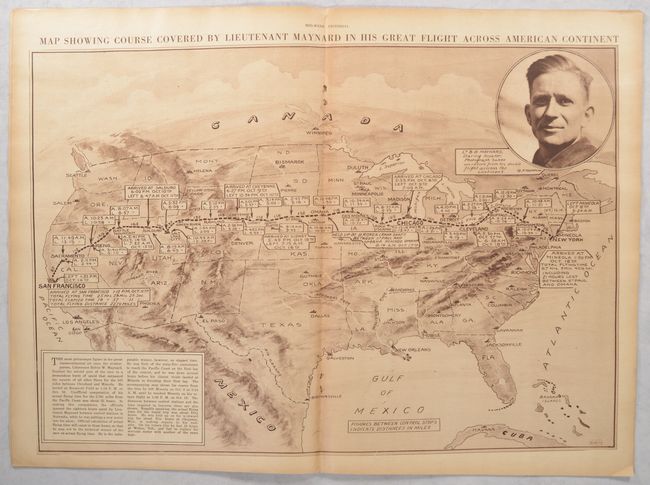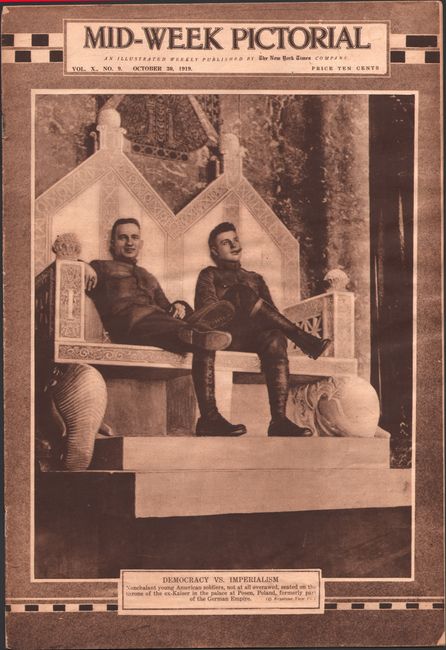Current Auction
Very Rare Map Commemorating the 1919 Transcontinental Aviation Race
"[Map in Magazine] Map Showing Course Covered by Lieutenant Maynard in His Great Flight Across American Continent [in] Mid-Week Pictorial - Vol. X. No. 9. October 30, 1919", New York Times
Subject: United States, Aviation
Period: 1919 (published)
Publication:
Color: Black & White
Size:
20.4 x 14.1 inches
51.8 x 35.8 cm
Download High Resolution Image
(or just click on image to launch the Zoom viewer)
(or just click on image to launch the Zoom viewer)
This rare map commemorates Lt. Belvin Maynard, the victor of a coast-to-coast aviation race that took place in October 1919. The transcontinental "air derby" was devised by General Billy Mitchell, who had served as the commander of American air operations on the Western Front of World War I. Funding for aviation dried up after the war; Mitchell hoped the spectacle of the race would generate public enthusiasm and Congressional funding for the aviation industry. The race began on October 8th, 1919, with more than 60 planes split into two groups, one in Mineola, New York, and the other in San Francisco. It was a media spectacle, covered extensively in the New York Times and other publications. It was also incredibly dangerous - there were 9 casualties and more than 50 accidents over the course of the race.
The map, credited to Kurth, depicts the route of the derby's winner, Maynard, from his departure in Mineola on October 8th, to his arrival in San Francisco on October 11th, and his return to Mineola on October 18th. His total flying time was more than 67 hours. A photograph of the pilot appears at top right. Like so many of the pilots participating in the race, Maynard was a veteran of World War I. Known as the "Flying Parson" since he was an ordained minister, Maynard was a crowd favorite and became a celebrity due to the race. His fame quickly turned to infamy after he falsely accused other pilots in the race of drunkenness. He died in a Vermont air show in 1922.
The map appears in the October 30, 1919 issue of the Mid-Week Pictorial, an illustrated weekly supplement published by the New York Times. The complete issue is included, with dozens of sepia-toned photographs of historical events. This is the first example of this map we have found, with no other examples on the market or institutional copies that we could find.
References:
Condition: B+
Contents are very good to near fine with some even light toning throughout. Covers are reattached with archival tape.
Estimate: $300 - $375
Current High Bid:
$150
Reserve: Reserve Not Met
Next Bid: $160
Bid Increments
$100 - $249$10
$250 - $499$25
$500 - $999$50
$1,000 - $2,499$100
Terms & Conditions



